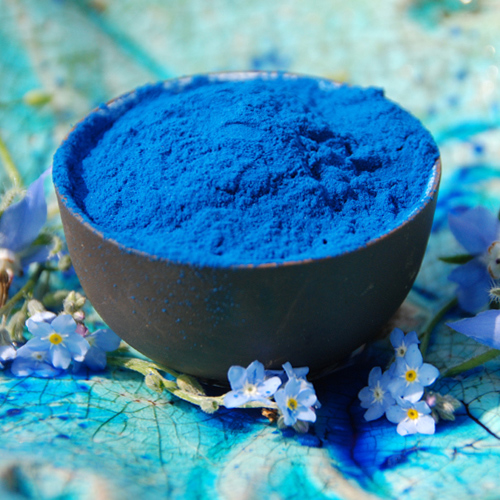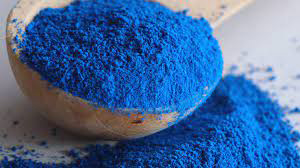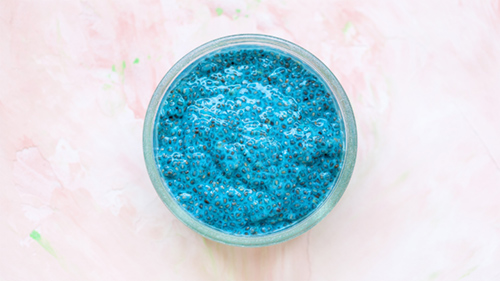Contents
The most common variety of blue spirulina, Spirulina maxima, is native to the salt lakes of the Mexican plains, such as the Totalcingo and Texcoco lakes. In their waters, there are high concentrations of sodium bicarbonate, other potassium and magnesium salts, and minerals such as selenium, which prevent the water from being polluted.
- Jumpstart Your Health – Blue Spirulina is considered a superfood due to the many health benefits it offers. Packed with vitamins, minerals, iron, and antioxidants, it has been known to support the immune system, improve digestion, increase metabolism, enhance energy levels, and promote enhanced mental cognition.
An extensive net of water channels has been discovered around these Mexican lakes, intended for growing blue spirulina and built by the Aztecs more than 500 years ago. These people, the Aztecs, following popular wisdom, used spirulina long before it could be watched and identified through the microscope, and modern chemistry found its exceptional composition.

Healing Properties and Indications
Due to its nutritional richness, the composition of this water vegetable has been the focus of some outstanding research projects for the last few years. Besides chlorophyll, like all algae, blue spirulina contains:
- Protein. Spirulina is one of the wealthiest natural protein sources (up to 70 percent of its weight, while soya has 35 percent and meat 20 percent). The spirulina protein is complete and has excellent biological value. Besides the other non-essential amino acids, it contains all eight essential amino acids (our bodies cannot synthesize) in an optimum proportion.
- Lipids (fats: 8 percent of their weight) are mainly unsaturated fatty acids such as linoleic, linolenic, and especially gamma-linolenic acids. Blue spirulina is one of the wealthiest vegetables for these essential substances, which are very valuable for treating arteriosclerosis.
- Sugars or carbohydrates (18 percent) are a rare natural sugar, rhamnose, which promotes glucose metabolism and favors diabetes.
- Vitamins A, B group, E, and H (biotin). Its content of vitamin B12 is outstanding and exceeds even that of the mammal’s liver, which makes blue spirulina a most appreciated food for people following a strict vegan diet, that is to say, lacking eggs, milk, and dairy products. Vitamin B12 is not contained in the true algae but in a type of bacteria that usually accompanies it.
- Several minerals and trace elements are present. Spirulina is especially rich in iron: 5.3 mg per 100 g of edible product (meat contains two to three mg per 100 g and liver 11 mg).
Due to blue spirulina’s excellent nutritional value, it has very favorable effects on many conditions and illnesses, such as:

- Diets for losing weight. Due to its relatively small amount of calories (360 calories per 100 g) compared with its protein and vitamin apportion. Its use helps keep a nutritional balance in hypocaloric diets, not provoking weakness or tiredness caused by dietary deficiencies. Besides, its contents of phenylalanine, an essential amino acid present in relatively high amounts in spirulina, help, according to some researchers, reduce the sensation of hunger.
- Diseases that require a strict diet, such as diabetes, hepatitis, or pancreatitis, in which there exists the risk of nutritional deficiencies.
- Anemia. Due to its high amount of iron and essential amino acids, it promotes hemoglobin synthesis, the vital part of red blood cells. It is recommended during pregnancy.
- Malnutrition, recovery, and physical weakness. It acts to revitalize and generally refresh the body.
- Arteriosclerosis and its disorders: Angina pectoris, heart attack, lack of blood flow, mainly affecting the legs. Blue spirulina’s favorable action is due to its content of unsaturated fatty acids, such as linoleic and gamma-linolenic acids.
Blue Spirulina Scientific Facts
- Scientific synonyms: Spirulina geitleri G. de Toni.
- Similar species: Spirulina platensis (Nord.) Geitler.
- French: Spiruline.
- Spanish: Espirulina.
- Environment: It grows spontaneously in alkaline water lakes of Mexico, Japan, Thailand, and Chad (Africa). In the United States, it is farmed.
- Description: Monocellular microscopic alga of the Cyanophycea family (blue-green algae), spiral-shaped. Its size varies from 0.1 to 0.3 mm.
- Parts of the plant used medicinally: The whole alga.
Obtaining Spirulina
When straining the water of the lakes where this alga grows and after pulverizing and desiccating it at 158°F (70°C), the most usually consumed form is obtained, from which the capsules and other preparations are made.
The Aztecs and other peoples living close to the lakes where spirulina grows obtained it traditionally employing sun desiccation.

How to use Spirulina
- Capsules of 400 mg to one gram of spirulina powder. This is the usual dosage. Take three to 12 capsules a day, distributed among three intakes. Taking these capsules half an hour before meals is recommended in diets for weight loss.
DISCLAIMER: All content on this website is presented solely for educational and informational objectives. Do not rely on the information provided as a replacement for advice, diagnosis, or treatment from a qualified medical expert. If you are pregnant, nursing, or have any preexisting medical concerns, talk to your doctor before using any herbal or natural medicines.
REFERENCES
- George D. Pamplona-Roger, M.D. “Encyclopedia of Medicinal Plants.” George D. Pamplona-Roger, M.D. Encyclopedia of Medicinal Plants. Ed. Francesc X. Gelabert. Vols. 1 San Fernando de Henares: Editorial Safeliz, 2000. 276, 277. Print.
- https://www.health.com/spirulina-7497604
- https://www.forbes.com/health/nutrition/health-benefits-of-spirulina/
Last update on 2025-05-29 / Affiliate links / Images from Amazon Product Advertising API






